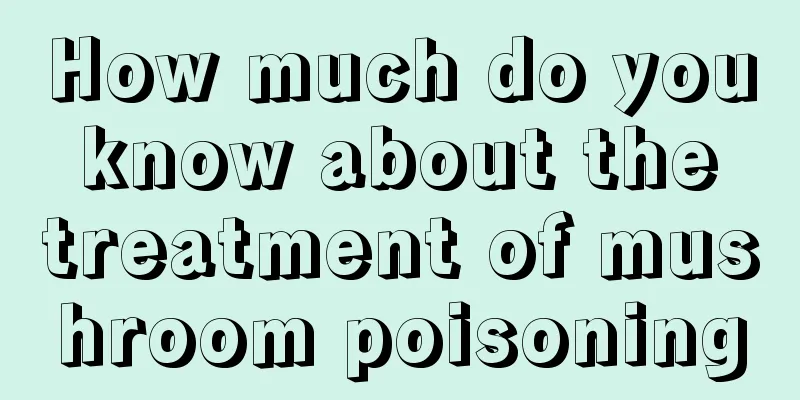What is Henoch-Schonlein purpura? 5 symptoms that cannot be ignored

|
Allergic purpura is a vascular reaction bleeding disease that can endanger the patient's health. This disease can cause systemic symptoms, abdominal bleeding and colic, skin rash, and allergic purpura can also cause nephritis. Once discovered, it must be diagnosed and treated as soon as possible. 1. Abdominal symptoms: Abdominal pain is common, mostly colic, caused by blood infiltration into the intestinal wall. The pain is obvious in the navel and right lower abdomen, and may also spread to the entire abdomen, but there is generally no abdominal muscle tension and the tenderness is mild. It may be accompanied by nausea, vomiting, diarrhea and black stools. Irregular intestinal peristalsis may lead to intussusception, and a mass may be palpable, which is more common in children. Intestinal perforation may occasionally occur. If it is not accompanied by skin purpura, it is often misdiagnosed as "acute abdomen". 2. The typical skin rash is brown-red maculopapules, which protrude from the skin surface, do not fade when pressed, and may appear alone or fused together, with symmetrical distribution. It is more common on the extensor side of the limbs and buttocks, rarely invading the trunk, and may be accompanied by itching or pain. It appears in batches and may leave pigmentation after it subsides. In addition to purpura, urticaria may also occur. Angioneurotic edema, erythema multiforme or ulcer necrosis, etc. Occasionally, purpura may occur on the oral mucosa or conjunctiva of the eyes. 3. Renal manifestations: Nephritis is the most common complication of Henoch-Schönlein purpura, with an incidence rate of 12~65%. It usually occurs within 1 to 8 weeks after the onset of purpura, with varying degrees of severity. Some are only short-term hematuria, while others quickly progress to renal failure, but this is rare. The main manifestations are acute glomerulonephritis symptoms such as hematuria, proteinuria, tubular urine, edema and hypertension. A few may develop into chronic nephritis, nephrotic syndrome, and some cases may develop into chronic renal failure. 4. Joint symptoms: The joints may have mild pain, obvious redness, swelling, pain and movement disorders. The lesions often involve large joints, most commonly the knees, ankles, elbows, wrists, etc. They may be migratory and are often misdiagnosed as "rheumatism." It is mainly a periarticular lesion, which can recur without leaving any joint deformity. 5. In a small number of other patients, after developing purpura, the lesions involve the meningeal blood vessels, manifesting as headache, vomiting, delirium, convulsions, paralysis and coma. A few cases may involve the respiratory system, manifesting as hemoptysis, asthma, pleurisy, pneumonia, etc. After the above introduction by the experts, everyone has understood the main symptoms of allergic purpura. I hope everyone has a simple understanding of the main symptoms of the disease so that they can discover them as early as possible in daily life and work. Once similar symptoms are found, go to the hospital as soon as possible for examination and professional treatment. |
<<: How long is normal for bleeding after tooth extraction?
>>: The fleshy buds on the head have these characteristics!
Recommend
What is the personality of people with type AB blood
It is usually difficult to judge the personality ...
Who are the high-risk groups for liver cancer? Eating this kind of food for a long time may cause liver cancer
Long-term consumption of moldy, seaweed-contamina...
What are the causes of nasopharyngeal carcinoma
Nasopharyngeal carcinoma is a common malignant tu...
What does it mean when a baby has a birthmark on his shoulder?
A person may have birthmarks on any part of the b...
Why do I feel weak and tired
People who sit for long periods of time at work, ...
How to treat vocal cord edema, the main methods are these
Nowadays, vocal cord edema is a disease that has ...
What are the effects and functions of lavender pillows
Lavender is a plant that we often use. It not onl...
What happens if you use too much facial cleanser?
The face is the part of our body that comes into ...
What to eat to prevent cervical cancer
Cervical cancer is a health killer for women. As ...
There is a soft lump next to the anus
In fact, in our lives, it is easy for us to negle...
What should patients with colon cancer pay attention to in their diet after surgery?
Colon cancer is related to long-term high-fat, lo...
Nursing for ruptured and bleeding liver cancer
Primary liver cancer rupture and bleeding is a co...
Early symptoms of testicular cancer
The early symptoms of testicular cancer are usual...
How many years can you live after ovarian tumor removal
Survival after ovarian tumor resection varies gre...
Key factors of breast-conserving surgery for breast cancer
Breast cancer is one of the most common malignant...









